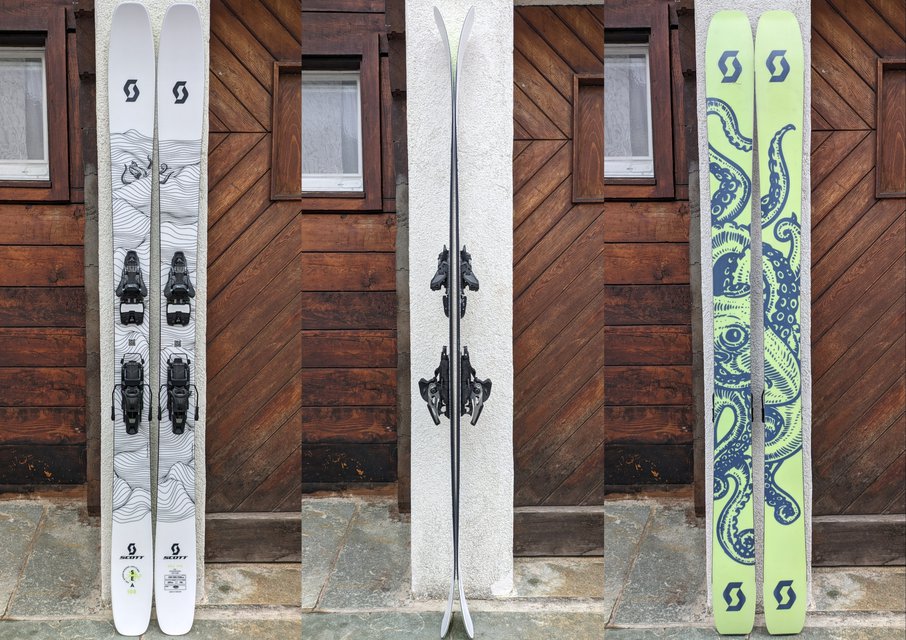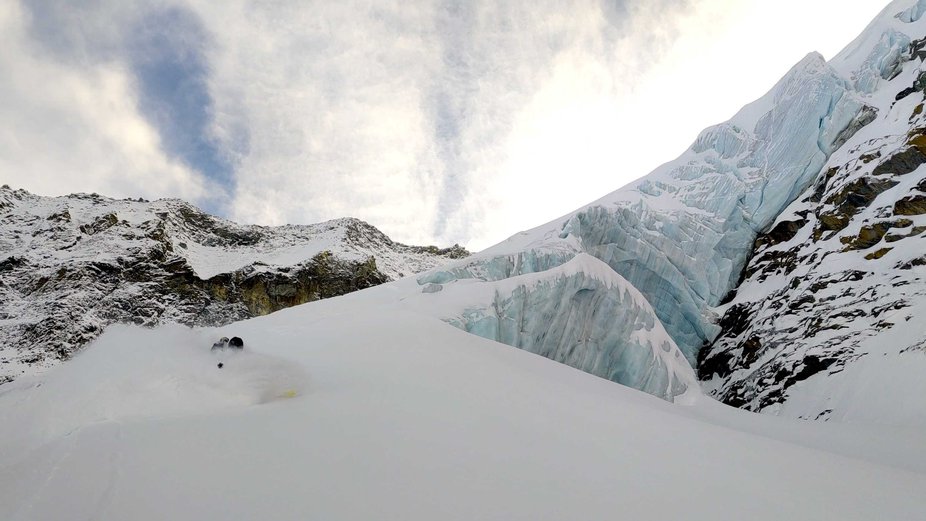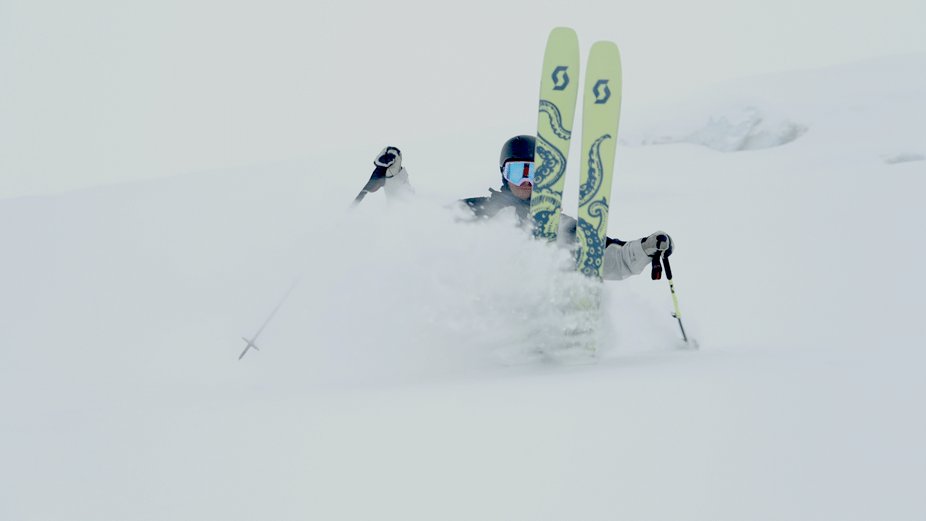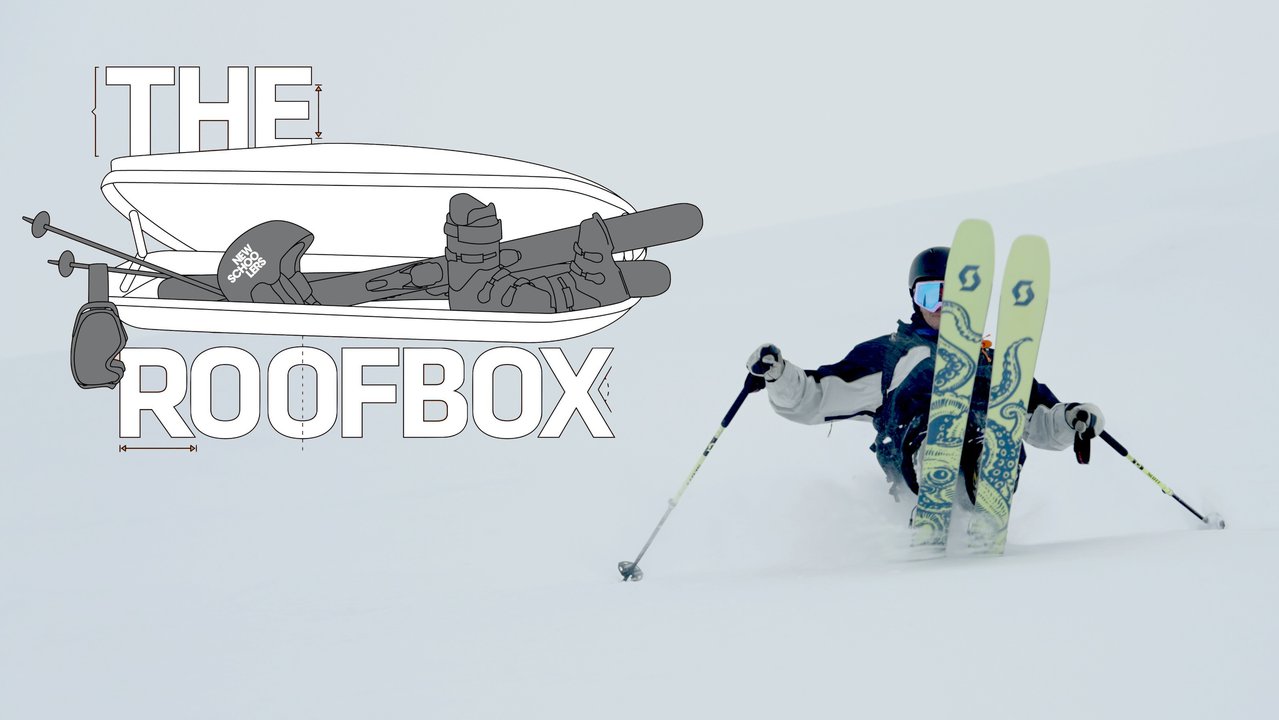Ski: Scott SEA 108
Reviewer height/weight: 5’9, 145lbs
Ski weights (per ski): 2040/2079g
Length skied: 184
Actual length (with straight tape): 182.5
Dimensions: 140 - 106 - 128
Mounted: -4 cm from the true center
Bindings: Armada Shift2 13
Locations: Saas-Fee
Conditions skied: Groomers, slush (weird season), wind crust, packed pow, pow, park, touring.
Days Skied: 9
_
Tis’ the season… for brands to move back to the freestyle space, apparently. We’ve seen Salomon come back with the Depart program (and arguably QST X), and there are a bunch of new freestyle-esque skis from Elan, Fischer, DPS, and now Scott. And that’s pretty big news too because Scott has been a big player in the freeski game at times. They had a Tom Wallisch pro model, remember?
Anyway, long story short, they took a few years out but with a new team behind the scenes, Scott is back with a brand new line of four skis. Ranging from 88mm to 116mm, the SEA collection (Ski Everything Anytime) is designed in collaboration with Parkin Costain. The SEA 108 is the ‘flagship’ ski of the line, and I jumped on them as soon as the snow started falling this season, so I have a solid chunk of days on them by now. From resort days to a rare touring outing I have tried to do just about everything with them. To me, they definitely felt different from a lot of what’s out there, and a lot of that comes down to the damp flex pattern.
_
Shape/Flex/Construction:
The SEA 108 comes with some interesting construction nuances including what Scott is calling ‘Spin Tech’ tips and tails, which is essentially edgeless and with a mellow horizontal rocker (essentially, a more mellow version of the Armada/Atomic ‘Smear Tech’). The longitudinal rocker isn’t as pronounced as some skis in this class but there is still plenty of tip rocker and somewhat less in the tail. There’s a smidge of camber underfoot but not much.

The poplar wood core includes in-cuts on the base side which reduce the total volume of wood while supposedly not affecting the structural integrity (Scott is calling this Air Tech). There’s a titanal layer underfoot and full sidewalls for power transmission too. A 19m radius in the 184 is about par for this category of skis and, overall the ski looks and feels like it has been well thought through. The flex of the ski feels a lot stiffer in the tails than the tip upon hand flexing and I’ll discuss that more later in the review. Overall, the flex stiffens relatively speaking throughout the ski. I would guesstimate out of 10 running from tip to tail: 6-7.5-9-8-7 not the stiffest but not the softest. The tail has less rocker too, so it feels much stiffer when skied than the tip.
_
On snow:
Groomers/Resort:
I have this category first on my list, which is perhaps unfortunate for the SEA 108, because to me this was the weakest aspect of the SEA 108’s performance. It’s not that they were bad groomer skis, but especially on more compact snow, I don’t feel like they wanted to carve particularly naturally. I mounted pretty close to recommended (closer than I do on most skis) and they just weren’t the most natural ski for laying into a turn. Of course, you can carve but it’s not a particularly engaging ski in that regard.
It’s worth noting that every ski I have skied this season, other than the Line Vision 114, has been way above average for carving (Line Blade/Chronic, MFree 108, Salomon Depart, Simply Recreation). I put this down mainly to the lack of much camber and a damp overall feel. The ski just doesn’t have much energy, something which pays off in other areas. It also has a deliberately pivot-y shape. The ski does just prefer to drift and slave rather than lock an edge. That style will suit certain skiers and it was certainly plenty adequate for resort skiing in a range of conditions but if carving angled turns on groomers is a priority for you, there are better skis in this width category.
Soft Snow:
However, get the SEA 108 in some soft snow and all that sideways action suddenly makes sense. Some people don’t like horizontal rocker, because it tends to deflect more than a flat base (though for me that wasn’t an issue with these skis), but I generally am a fan. Maybe it’s subconscious but I feel like every ski I’ve tried with this kind of profile loves to smear in pow. And everything about the SEA shape seems designed to accentuate that. It has plenty of taper in the tip, and even a slightly pinned tail. Result, you think sideways and the ski just does it.

P: Hanne Lundin
The tail of these is pretty stiff, so that slightly narrower tail allows the tail to still sink, which helps balance the ski nicely in soft snow. The tips are softer, meaning the ski floats to the surface pretty naturally forward. For me, the SEA actually handles soft snow pretty similarly to the MFree 108, despite having fairly different rocker and flex profiles, which is an interesting outcome (and a huge positive since I love the MFree). For such a surfy ski, they are also pretty happy to straightline steeper faces and don’t feel like they get too deflected or want to turn all the time. I was surprised by that given how easily they go sideways but in almost all conditions, these skis felt ‘settled’ to me.
Crud, shit snow etc:
And that was doubly true in cruddy, chopped-up snow. Given the softer tip, I was surprised by the performance of the SEA 108 in mixed snow. I suspect part of that is that the tip isn’t THAT soft, more a mid-flex, but it’s noticeably softer and more rockered than the tail. The rest of the ski is pretty solid, so if you get pushed into the backseat there’s plenty of support. Overall, to me, the whole ski was very damp feeling, so while there is some deflection due to a softer tip, it doesn’t seem to unsettle the ski much. Damp characteristics can be a downside in places but in crud and mixed/backcountry snow, this ski was one of the most natural skis I’ve tried. I ended up skiing these in lots of chopped-up snow. I also took them on a largely unsuccessful tour which meant skiing down bulletproof windcrust and then heavy slush and they did all of that with poise. Far more poise than the skier riding them, that’s for sure. For me, the SEA is a great ski to take out of bounds for days when you don’t quite know what the weather gods might have delivered.
Park/Jibbing:
I did do a couple of laps in the park on the SEA 108s but they aren’t particularly natural for hard snow freestyle. The difference in flex tip to tail just doesn’t lend itself naturally to being a park ski. Despite a more freestyle shape, these are definitely more of a modern freeride ski than an all-out freestyle ski. They were great for hitting drops with that stiff tail and the moderate weight made them fun for tapping pillows, shifties, and some mellow spins but the directional flex/profile isn’t super conducive to landing switch, etc. You can do it for sure, there’s plenty of tail, especially for park usage but it’s not a ski you buy specifically for that purpose.
These are more of a playful ski but for a directional kind of skier. If you think about a spectrum that runs from say Vishnu Wide (ultra playful) to Salomon QST 106 (largely directional), these would be more playful than the QST and the like, but towards that end of the scale (perhaps similar positioning to a Line Optic).

New go-to review shot. P & cover: Puzzle Media
_
Durability:
I didn’t have any issues with durability but for a soft snow ski, this section is almost defunct. In 9 days of testing, I hit a bunch of small rocks with no major damage, but I didn’t hit rails except to 5050 a couple so the edges didn’t get tested. They aren’t particularly fat so I wouldn’t make this a rail ski, but that aside, they felt well built and the finish looked good but that’s about all I can say.
_
Comparisons:
vs Line Bacon 108.
These skis have the same footprint more or less, but the Bacon is basically a wide park ski (symmetrical flex, soft tip and tail) so it feels much more natural in the park, buttering on hard snow, etc. It also turns with much more energy on groomed snow. At the same time, it’s much less settled in mixed snow, because it has so much more energy, and it gets bounced around way more. The SEA 108 floats better too and is much better for stomping drops and can be skied more aggressively (by mere mortals).
Dynastar MFree 108:
The SEA 108 and the MFree 108 end up excelling in very similar areas, despite on paper being quite different skis. The big difference is the MFree has much more edging power on hardpack, while the SEA provides a much smoother ride in mixed conditions. The MFree rewards a more on-it style of skiing while the SEA felt kinda like an easy-rider. The SEA feels more predictable to me in open terrain, where the MFree might be slightly easier going in tight trees. Both are a lot of fun.
Salomon QST 106:
The QST is definitely stiffer and more powerful on edge than the SEA but despite having a fairly rockered surfy looking shape, it's not a particularly playful feeling ski. The QST just feels solid, dependable but lacks fun factor. The SEA is damp and somewhat directional but it still feels 'fun' and playful to ski.
_
Conclusion:
The Scott SEA 108 is a unique re-entry into the Newschoolers ski space. It’s not what other brands have done, which is to come back with a fully-fledged freestyle line. I think that’s pretty smart of Scott, because I don’t think they are going to persuade a certain consumer group to suddenly switch from buying say, Vishnu or even Lines to buying Scott. Where this ski works best is the in-between space between backcountry freestyle and freeride that a LOT of buyers occupy. If you’re the kind of skier who might throw a three or a backflip now and again but is mostly skiing a bit of everything, generally forwards, and mostly off-piste/freeride zones/out-of-bounds, these are a great option, and certainly worth a shot. For me, they aren’t the best groomer ski in this space, and they certainly have more of a Rockies/West Coast vibe about them, in that they do better where the snow is usually soft and bumpy or cruddy, rather than the harder-packed/icy. To me, they are more soft snow-oriented than lots of skis in this width category, but then they do excel in soft and mixed snow.
They’re a solid ski for taking out of bounds or touring because they are so predictable in a variety of snow types. Perhaps the most stand-out feature of all, is that I found the SEA 108 very easy to ski. On the first day I took them up for some laps, the conditions turned out to be way worse than I expected. Slushy bumps and heavy pow. I did one run before switching to park laps, but the skis felt super intuitive and predictable even dealing with conditions I generally don't like. Every day I skied them, I was amazed by how easily they broke loose without ever feeling unstable. For me, they are a ski I think it’s a good idea to try and demo because they could be a bit ‘marmite’ depending on your ski style. I felt like they rewarded skiing smoothly more than trying to push them super hard. But I love a ski that brings something different, and these certainly do. The more directional flex married with a loose surfy shape makes for a ski that stomps hard but still feels super fun to ski. I've found myself still skiing them a fair bit, even once I had enough material for the review already, which is always a good sign!


Comments